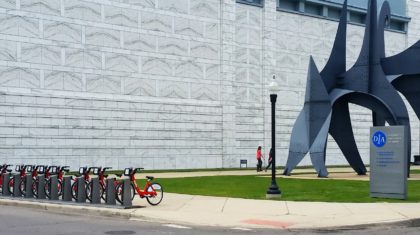
by Joe Gilpin, Principal, and David Foster, Senior Designer
What if it were possible to travel by bike through nearly 180 miles of the most scenic terrain in the Rocky Mountains on a completely separated trail with the vast majority at easy railroad grades? What if this trail provided a diversity of experiences through three National Forests in Montana, Wyoming, and Idaho, including breathtaking backcountry to some of the region’s top tourist attractions on the doorstep of Yellowstone and through Grand Teton National Park? Thanks to a determined group of stakeholders across these three states, this vision could soon be a reality. The Greater Yellowstone Trail Concept Plan formalizes a vision for a world-class regional trail system that would enhance quality of life, improve access to recreation, and spur economic development opportunities for local communities along this unique and diverse corridor.
In fact, more than 113 miles of this vision are already in service and being used by locals and tourists alike. The Concept Plan leverages previous investments and existing trails with new projects to develop a unified and consistently branded long-distance trail system. This plan recognizes that the future trail will not only improve the quality of life but will also boost the economy in ways consistent with the priorities of the HUD Sustainable Communities Planning Grant that funded the project.

In total, 23 different agency and stakeholder groups participated in the planning process, clearly demonstrating a desire for the Greater Yellowstone Region to not only be one of the nation’s leading tourist destinations, but also one of the nation’s premier bicycling destinations. What better way to experience the grandeur and biological diversity of the corridor than at a bicyclists pace in open air, outside the confines of an automobile?
The Greater Yellowstone Trail also offers an experiential history lesson of the region. Historic stories and relics from a variety of periods — including early Native American history, 19th and 20th-century railroad development, and early 20th-century agriculture — can be observed and interpreted throughout the corridor. The Concept Plan details the historical and cultural resources, identifies proposed projects to upgrade existing trail segments and fill in missing links. The Plan also outlines long-term maintenance needs and strategies, funding tactics, and the next steps towards realizing the overall vision.


As the Principal-in-Charge and the Project Manager, we can definitely say that this was one of the most memorable experiences of our careers. Alta toured the length of the project’s extents and actually rode our bikes over a significant portion of it. We saw some amazing sites, such as the Teton Range emerging from some low clouds after a dusting of snowfall, a bull standing not 20 yards from us near the Bear Gulch portion of the trail, and an evening ride on the trail where a golden light perfectly complimented the adjacent fields and grain elevators. Moreover, we were and remain convinced this corridor is a national treasure with which its full resources are generally unknown.
We invite you to browse our Concept Plan, and if you are organizing a trip to the Greater Yellowstone Region… bring your bike.



